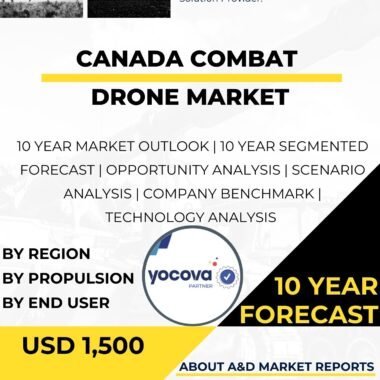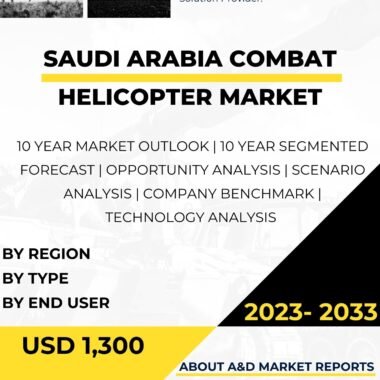Description
The Australia Combat Management Systems (CMS) Market is a critical and rapidly evolving sector that plays a pivotal role in enhancing the country’s defense capabilities and military operations. Combat management systems are advanced software and hardware solutions that enable the Australian Defense Force (ADF) to effectively command and control various combat platforms, such as ships, submarines, and aircraft. These systems integrate sensors, weapons, communication systems, and data processing capabilities, providing commanders with real-time situational awareness and facilitating coordinated and efficient decision-making during complex operational scenarios. As a nation with diverse and extensive maritime territories, vast airspace, and strategic interests in the Indo-Pacific region, Australia recognizes the strategic importance of investing in cutting-edge CMS technologies to maintain a credible deterrence and respond effectively to regional security challenges. This article provides a comprehensive analysis of the Australia Combat Management Systems Market, covering its current state, key drivers, challenges, applications, technological advancements, and growth prospects.
The Australia Combat Management Systems Market has witnessed significant growth and interest due to the ADF’s focus on modernizing its defense capabilities and adopting state-of-the-art technologies to enhance its operational effectiveness. Combat management systems are at the heart of any modern combat platform, allowing seamless integration of various subsystems and enhancing the overall combat effectiveness of the ADF’s assets.
One of the key drivers behind the market’s prominence is the ADF’s commitment to achieving enhanced interoperability and network-centric warfare capabilities. Combat management systems provide a common operating picture, enabling different combat platforms to share real-time information and collaborate effectively during joint military operations.
Moreover, the Australia Combat Management Systems Market is driven by the country’s interest in fostering indigenous defense production and technology development. Collaborations between the government, defense industries, and research institutions have led to the development of customized CMS solutions tailored to meet Australia’s specific defense requirements. This approach not only strengthens the country’s defense capabilities but also supports the growth of the local defense industry, creates jobs, and fosters technology export.
The market’s growth is also influenced by Australia’s geographic location and strategic interests. As a nation with vast maritime territories, combat management systems play a crucial role in enhancing the ADF’s maritime surveillance, patrol, and response capabilities. Additionally, the capability to integrate air, sea, and land assets into a unified network enhances the ADF’s capacity to respond to potential threats and protect its maritime and airspace domains.
The Australia Combat Management Systems Market encompasses a wide range of applications and capabilities tailored to meet the diverse needs of the ADF. CMS are primarily used in naval vessels, submarines, and aircraft to optimize their combat capabilities and enhance their mission effectiveness.
For naval vessels, CMS serve as the central nervous system, integrating sensors, weapons, and communication systems to provide a comprehensive view of the battlespace. These systems enable naval commanders to effectively manage and respond to surface, subsurface, and aerial threats, making them an indispensable tool in modern naval operations.
Similarly, in submarines, CMS plays a crucial role in sensor management, data fusion, and torpedo control, ensuring that these stealthy assets can operate effectively and maintain situational awareness even while submerged.
For aircraft, CMS facilitates the integration of sensors, weapons, and avionics systems, enabling pilots to make informed decisions in dynamic aerial environments. It allows for efficient sensor management, target tracking, and weapons delivery, enhancing the operational capabilities of the ADF’s airborne platforms.
Additionally, CMS applications extend beyond individual platforms and encompass broader joint operations, command centers, and shore-based facilities. These systems enable the ADF to manage and coordinate multiple assets across different domains, ensuring a synchronized and effective response to a wide range of military scenarios.
Despite the market’s growth and potential, the Australia Combat Management Systems Market also faces certain challenges. One significant challenge is the need for continuous research and development to stay at the forefront of CMS technology and address emerging threats. As adversaries develop new tactics and technologies, ongoing investment in innovation and technology development is crucial to maintaining a competitive advantage and ensuring the effectiveness of combat management systems.
Moreover, addressing the issue of resource allocation and budget constraints is essential for optimizing the procurement and modernization of CMS capabilities. Striking a balance between investing in advanced CMS technologies and other defense priorities requires careful planning and prioritization.
Additionally, ensuring the security and resilience of CMS platforms and networks is of paramount importance, given the critical nature of these systems. Robust cybersecurity measures and secure communication networks are necessary to protect sensitive data and prevent potential cyber threats to combat management systems.
Looking ahead, the Australia Combat Management Systems Market is expected to witness continued growth and advancements. As the ADF continues to modernize its defense capabilities, enhance its joint operational capabilities, and respond to emerging security challenges, the demand for cutting-edge CMS technologies will remain strong. Continued investment in research and development, collaboration between the government and industry stakeholders, and a focus on addressing technical challenges will drive advancements in CMS technology and applications.
In conclusion, the Australia Combat Management Systems Market is a strategically important sector that supports the country’s defense capabilities and contributes to its military readiness and operational effectiveness. Combat management systems serve as the backbone of modern combat platforms, providing the ADF with essential command and control capabilities to protect Australia’s territorial integrity and respond effectively to regional security challenges. The market’s growth is driven by Australia’s commitment to defense modernization, fostering innovation within its defense industry




